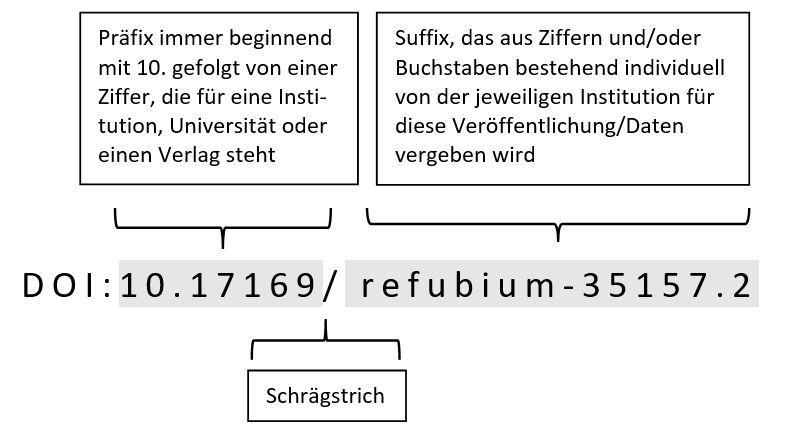DOI (Digital Object Identifier)
DOI stands for Digital Object Identifier, a unique and permanent (persistent) identifierDOI stands for Digital Object Identifier, a unique and permanent (persistent) identifier for digital objects, such as articles and contributions in scientific publications, as well as lecture publications and educational materials. A DOI must first be registered in the central database of the International DOI Foundation see: https://www.doi.org/. Read More for digital objects, such as articles and contributions in scientific publications, as well as lecture publications and educational materials. A DOI must first be registered in the central database of the International DOI Foundation1 see: https://www.doi.org/.
A persistent identifier refers to the object itself, not its location on the internet (unlike URLs). If the location of a digital object associated with a persistent identifier changes, the identifier remains the same; only the URL location needs to be updated or added in the identifier database. This ensures that a dataset remains permanently findable, accessible, and citable (Forschungsdaten.info, 2023).
A DOI always consists of a prefix and a suffix, separated by a slash. For example, doi: 10.17169/refubium-35157.2. The suffix refubium-35157.2 refers to the publication „Zur Teilbarkeit ethnografischer Forschungsdaten. Or: How much privacy does ethnographic research need?“, which is archived in the Refubium of the Freie Universität Berlin under 17169 (see: https://refubium.fu-berlin.de/handle/fub188/35442.2).

Prefix: Always starts with „10.“ followed by a number representing an institution, university, or publisher.
Suffix: Consists of numbers and/or letters, assigned by the respective institution for the specific publication or dataset.
DOIs can be presented in various formats, depending on the citation style:
- doi: 10.17169/refubium-35157.2 (Harvard citation style)
- DOI: 10.17169/refubium-35157.2
- https://doi.org/10.17169/refubium-35157.2 (APA citation style)
- https://dx.doi.org/10.17169/refubium-35157.2
Literatur und Quellenangaben
Forschungsdaten.info. (2023). Glossar. forschungsdaten.info. https://forschungsdaten.info/praxis-kompakt/glossar/
